
The Battle of Waterloo
A Patterson Blick Instant Picture Book
by Dennis Knight



Dated: August 14, 1999, all 3 pages updated August 16, 99.
Waterloo through the eyes of a 12 year old. For those who've not had the pleasure or those who've owned and lost the book, here are 20 pictures that elegantly and eloquently if simply told the Battle of Waterloo to a generation of English (speaking) children.
Cover. French cuirassiers charge towards the English squares.
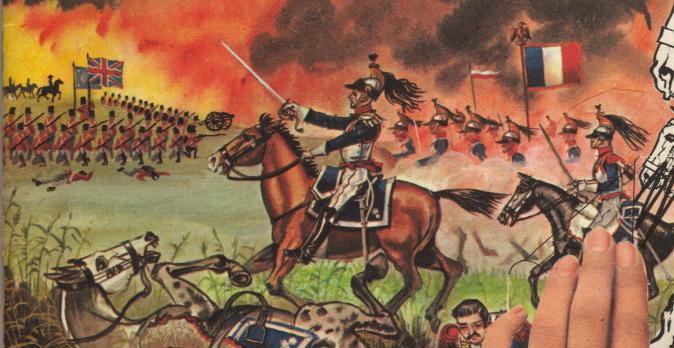
Out of Elba. The triumph of Napoleon, review of troops. (*See footnote 1)
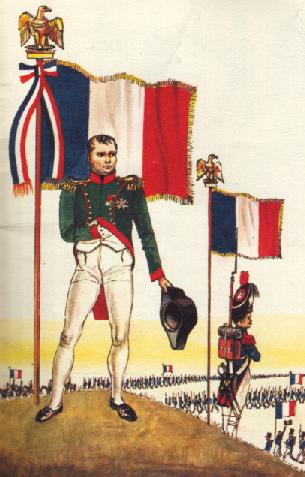
The Duchess of Richmond's Ball, unsuspecting. The Duke, in the footsteps of Drake, gives orders to all not to rush out of the room all at once. (*footnote 2)
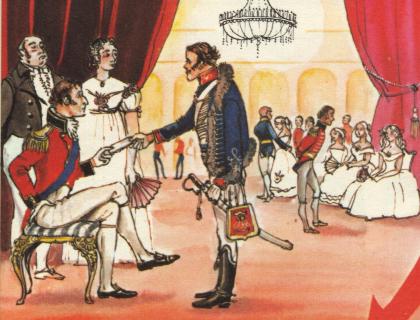
English troops: Lifeguard, infantryman, highlander and light dragoon.
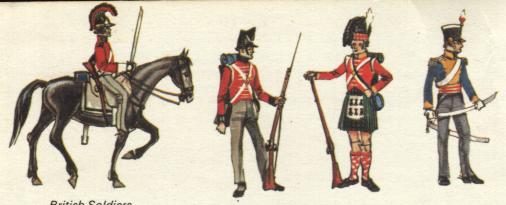
The others: Belgian, Dutch, Prussian infantry and Prussian cuirassier. (*footnote 3)
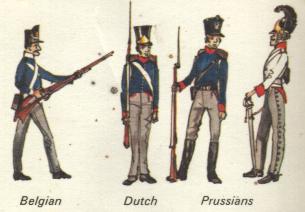
French troops: fusilier, voltigeur, grenadier, carabinier, dragoon, cuirassier, cannon.

French continued: artillery train, young guardsmen, Dutch lancer, horse grenadier, guard chasseur and guard grenadiers.

Footnotes:
1) Two stereotypes in one. Not strange until you really look at it. Napoleon is shown wearing his favorite uniform, that of his Guard Chasseurs and also putting his hand in his coat. When Napoleon is depicted with hand in coat, it's usually when he's wearing his bottle green overcoat. It's easy to put your hand in an overcoat because it's loose, just slip it in between two buttons, but look at the picture again, he's got his hand in his waistcoat, not only is a waistcoat tight fitting, he's had to unbutton 4 buttons to put it in!
2) Sorry, for those not familiar with English history, Sir Francis Drake when told of the appearance of the Spanish Armada on the horizon takes time to finish his game of bowls before setting off to trounce the Spanish. Drake's anecdote has often been used by Englishmen when someone didn't get out of bed in time, but one of these days, someone is going to try to emulate Drake and get himself soundly whooped. (Both the Duke and the Drake had matters planned beforehand).
3) The Brunswickers are not even mentioned by name, only as German volunteers. Unfortunately this book tends very much to be a British vs. the French book. But after all it is an English children's picture book, not a Dutch-Belgian, or Brunswicker, or Prussian children's picture book. It would be interesting to see if Dutch, Belgian, German or French children's books portray the battle in a completely different light.